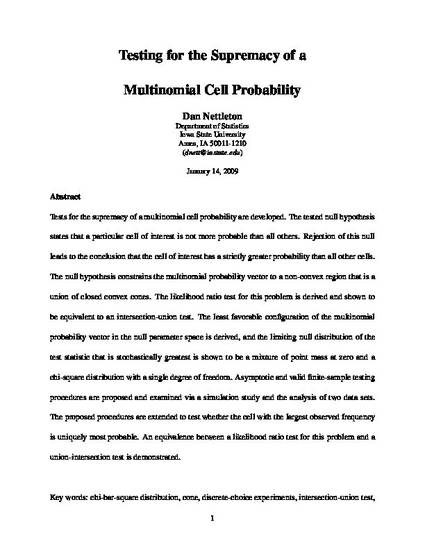
Tests for the supremacy of a multinomial cell probability are developed. The tested null hypothesis states that a particular cell of interest is not more probable than all others. Rejection of this null leads to the conclusion that the cell of interest has a strictly greater probability than all other cells. The null hypothesis constrains the multinomial probability vector to a non-convex region that is a union of closed convex cones. The likelihood ratio test for this problem is derived and shown to be equivalent to an intersection-union test. The least favorable configuration of the multinomial probability vector in the null parameter space is derived, and the limiting null distribution of the test statistic that is stochastically greatest is shown to be a mixture of point mass at zero and a chi-square distribution with a single degree of freedom. Asymptotic and valid finitesample testing procedures are proposed and examined via a simulation study and the analysis of two data sets. The proposed procedures are extended to test whether the cell with the largest observed frequency is uniquely most probable. An equivalence between a likelihood ratio test for this problem and a union-intersection test is demonstrated.
Available at: http://works.bepress.com/dan-nettleton/43/

This preprint was published as Dan Nettleton, "Testing for the Supremacy of a Multinomial Cell Probability", Journal of the American Statistical Association (2009): 1052-1059, doi: 10.1198/jasa.2009.tm08213.